Physical Address
304 North Cardinal St.
Dorchester Center, MA 02124
Physical Address
304 North Cardinal St.
Dorchester Center, MA 02124
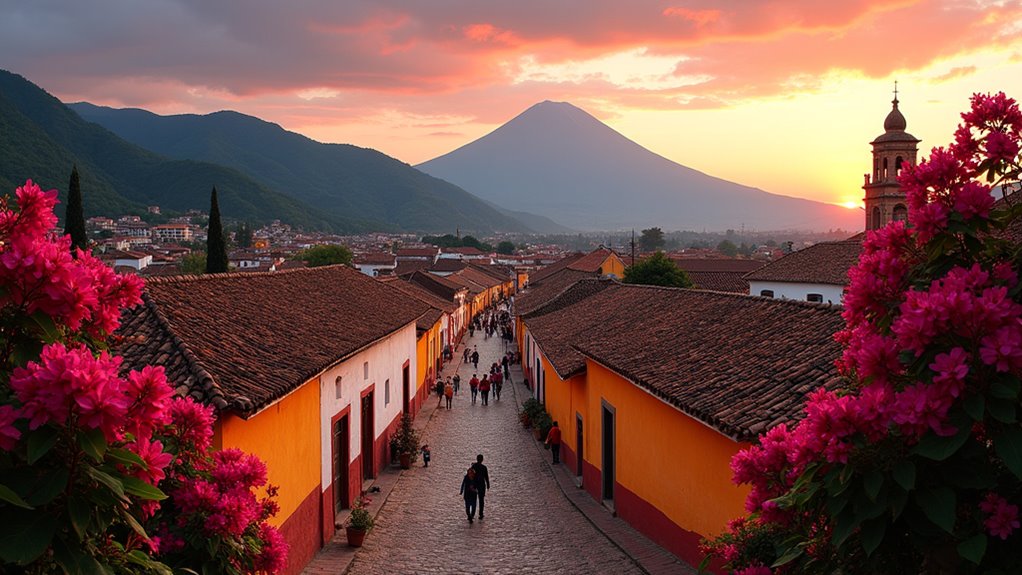
In this surprising guide to Central America's safest havens, discover which 7 cities offer both cultural richness and peace of mind.
Central America offers several safe havens for travelers. You’ll find eco-friendly Alajuela in Costa Rica, modern Panama City, and surprisingly secure Mixco in Guatemala. Santa Ana, El Salvador has dramatically reduced crime rates, while Granada, Nicaragua blends colonial charm with solid security. San José, Costa Rica and David, Panama round out the list with their strong infrastructure and natural attractions. These destinations combine cultural experiences with peace of mind for your Central American adventure.
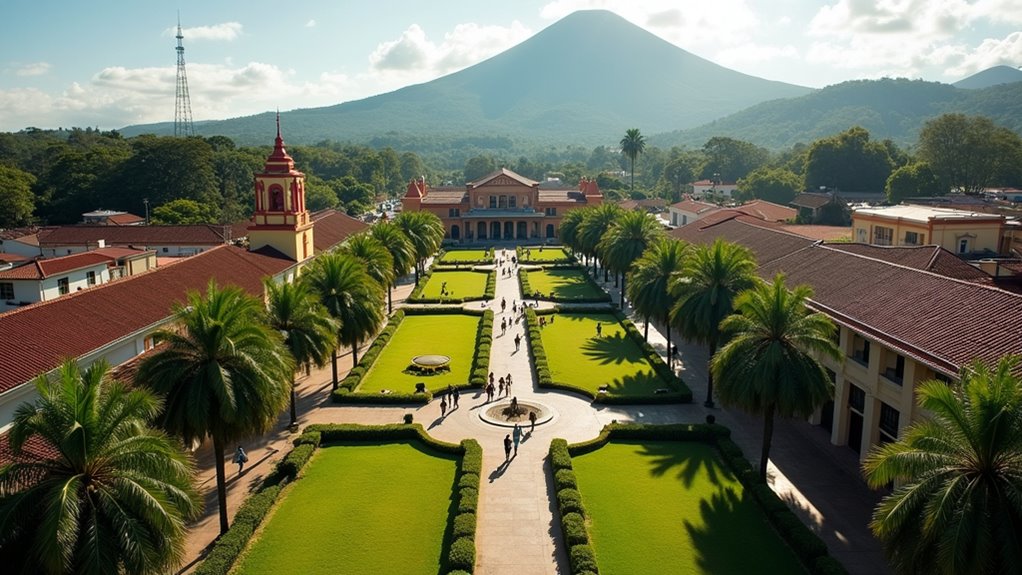
Nestled in Costa Rica’s Central Valley, Alajuela strikes a remarkable balance between safety and natural beauty with its impressive 79/100 safety rating. You’ll find this destination less crowded than other Costa Rican hotspots while still offering abundant eco-tourism opportunities.
The city serves as a gateway to the majestic Arenal Volcano and several national parks where you can enjoy hiking, wildlife viewing, zip-lining, and rafting. Despite moderate concerns about property crime and corruption, travelers generally experience a secure environment, especially when taking standard precautions. However, travelers should be aware that Alajuela has been identified as an area with higher gang activity compared to some other regions in Costa Rica.
Alajuela boasts good infrastructure with reliable transportation, quality healthcare, and accommodations for every budget. The affluent cultural heritage, regular local festivals, and strong community engagement add authentic charm to your Central American adventure while supporting sustainable tourism practices.
As Panama’s bustling capital, Panama City maintains a moderate safety rating despite its prominence as Central America’s financial powerhouse. The city recorded a murder rate of 13.45 per 100,000 inhabitants, with homicides increasing 4.4% from 2023 to 2024.
You’ll find tourist areas like Casco Viejo and upscale Obarrio relatively secure due to increased police presence. When exploring the city, opt for Uber rather than hailing street taxis, especially at night.
While enjoying Panama City’s vibrant nightlife, remain vigilant about your surroundings. Petty theft remains common in tourist zones, so keep valuables secure. The country has experienced a steady upward trend in crime rates from 2018 to 2021, with annual increases each year.
Stay alert while experiencing Panama City after dark—pickpockets frequently target visitors in popular areas.
The city’s modern infrastructure and ongoing urban development contribute to safer environments in certain neighborhoods, though economic growth hasn’t eliminated all safety challenges.
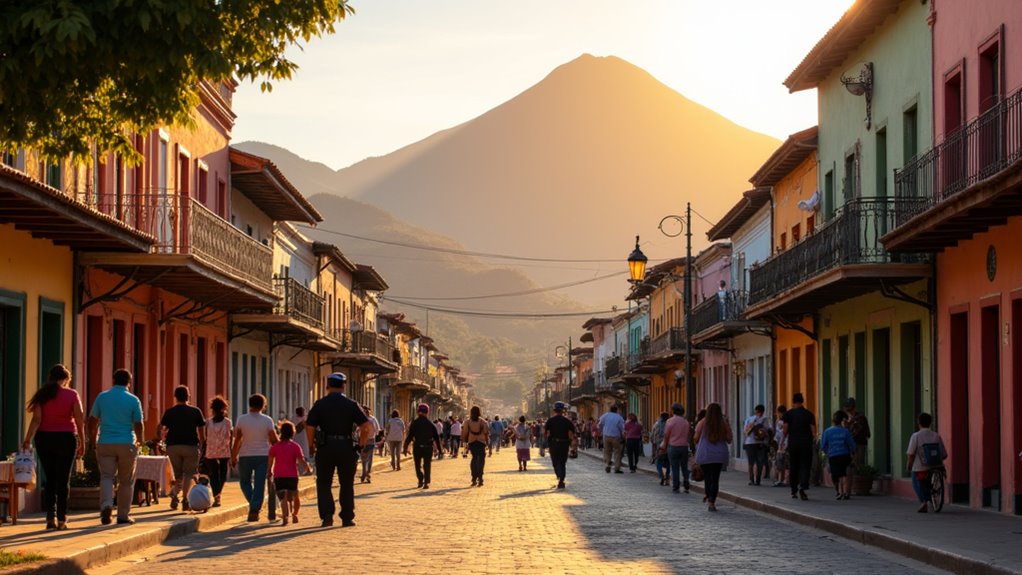
Moving from Panama’s financial hub to Guatemala’s urban landscape, Mixco appears prominently as a surprising safe haven in Central America. With a safety index of 60.29, this city adjacent to Guatemala City offers relative security despite the country’s challenging reputation.
Your experience in Mixco will likely include:
Visitors can enjoy particularly high safety during daylight hours, with safety perception ratings reaching nearly 70 points according to recent surveys. While you’ll need to exercise standard precautions and avoid certain neighborhoods, Mixco demonstrates how targeted security measures can transform urban safety, even in regions typically associated with higher crime rates.
Despite its challenging past, Santa Ana has emerged as one of El Salvador’s safest destinations with a remarkable transformation in security. The city has seen dramatic crime reduction, with national homicide rates dropping nearly 70% due to strict government measures against gang activity.
You’ll find a welcoming atmosphere as you explore Santa Ana’s stunning cathedral, vibrant markets, and colonial architecture. The nearby Santa Ana Volcano and Lake Coatepeque offer breathtaking natural experiences for outdoor enthusiasts. Visitors can now confidently use local bus services which have become increasingly safe and provide an affordable way to explore the region.
While major crime has decreased considerably, remain vigilant about your belongings. Use money belts or anti-theft bags and avoid displaying valuables openly. The locals are friendly and tourism infrastructure continues to improve, making your visit both safe and memorable in this culturally affluent Salvadoran city.
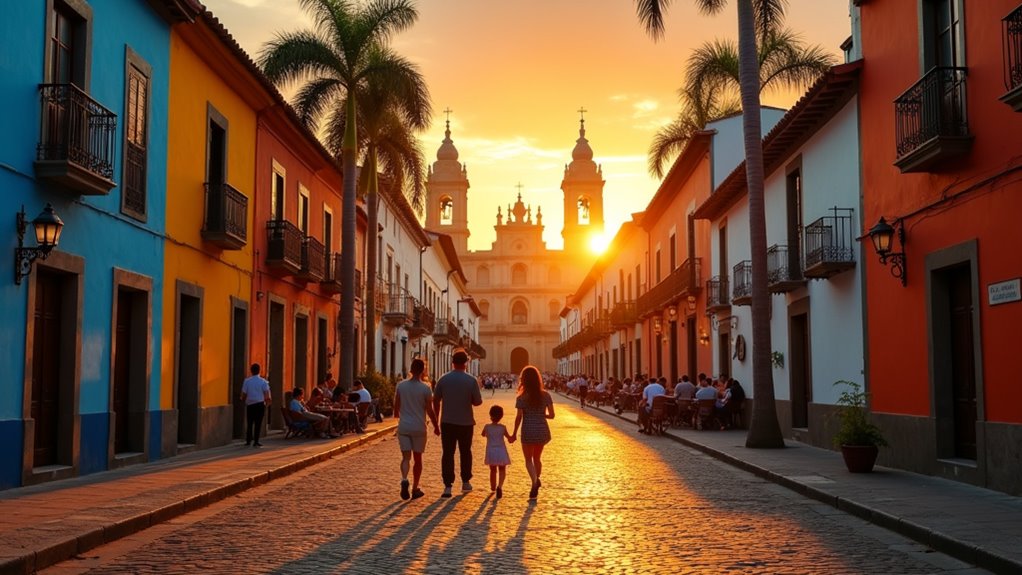
Granada is prominent as Nicaragua’s colonial jewel, offering visitors both historical charm and improved security. With a safety score of 67/100, it ranks mid-tier globally but stands as one of Nicaragua’s more affluent urban destinations.
The city’s tourism-driven economy has fueled infrastructure improvements and increased security presence, especially in areas frequented by travelers. With its vibrant nightlife, cobblestone streets, and well-preserved colonial buildings, Granada continues to attract travelers despite political turbulence elsewhere in the country.
When exploring Granada, you’ll appreciate:
While petty theft can occur in crowded areas, taking standard precautions and using local guides will help you enjoy Granada’s rich cultural heritage safely.
While Costa Rica consistently ranks as one of Central America’s safest countries, its capital San José presents a more nuanced safety picture. With a crime index of 55.5, you’ll need to exercise caution, especially in high-traffic areas where travelers are typically targeted.
Recent government initiatives have bolstered security, including the “Costa Rica Segura Plus” operation that added 1,500 officers to city patrols in 2024.
You’ll find Tourist Police ready to assist in popular destinations.
Despite a rise in homicides in early 2025, the country saw a 2.7% decrease in homicides nationally from 2023 to 2024. Crime statistics show a pattern of recent increases in overall crime rates during 2020 and 2021 after a notable decline in 2019.
If you encounter trouble, call 911 or join community WhatsApp groups that alert residents to potential threats.
Drug trafficking remains a challenge, but tourist areas receive heightened police presence.
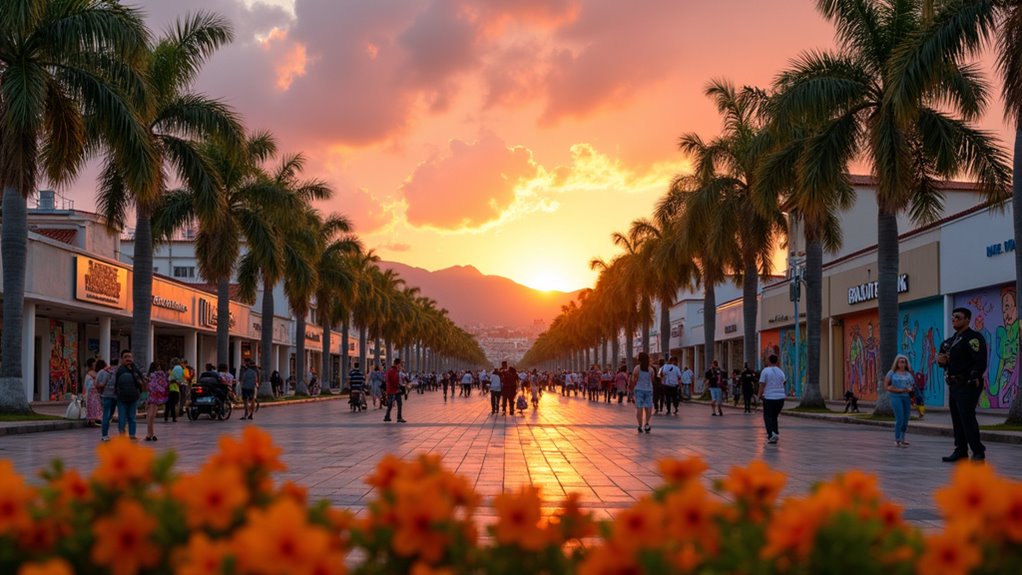
Nestled in Panama’s western Chiriquí Province, David offers a revitalizing alternative to the country’s bustling capital with considerably lower crime rates and abundant natural attractions. This commercial hub maintains visible police presence in tourist areas, making it safe to explore even after dark, though standard precautions remain advisable.
Escape the capital’s hustle in David—where lower crime rates meet natural splendor in Panama’s refreshing western haven.
Central America offers you safer havens than you might expect. From Panama City’s urban sophistication to Granada’s colonial streets, these cities prove safety doesn’t mean sacrificing authenticity. You’ll find eco-adventures in Alajuela, cultural abundance in Santa Ana, and unexpected tranquility in Mixco. Whether you crave metropolitan energy or small-town charm, these seven destinations blend security with the vibrant spirit that makes Central America truly special.